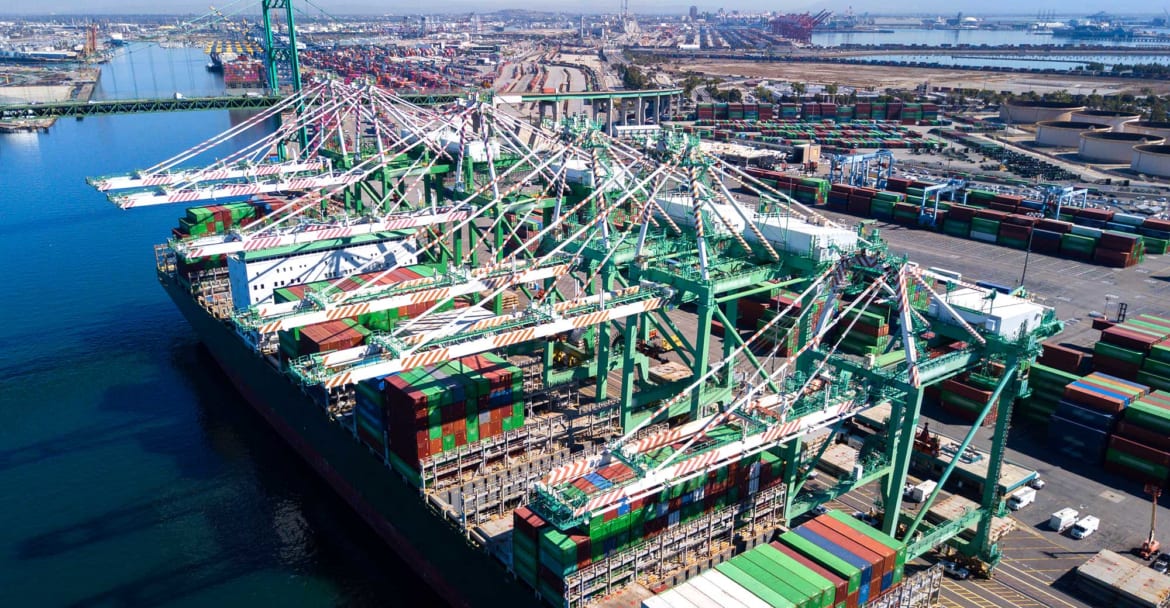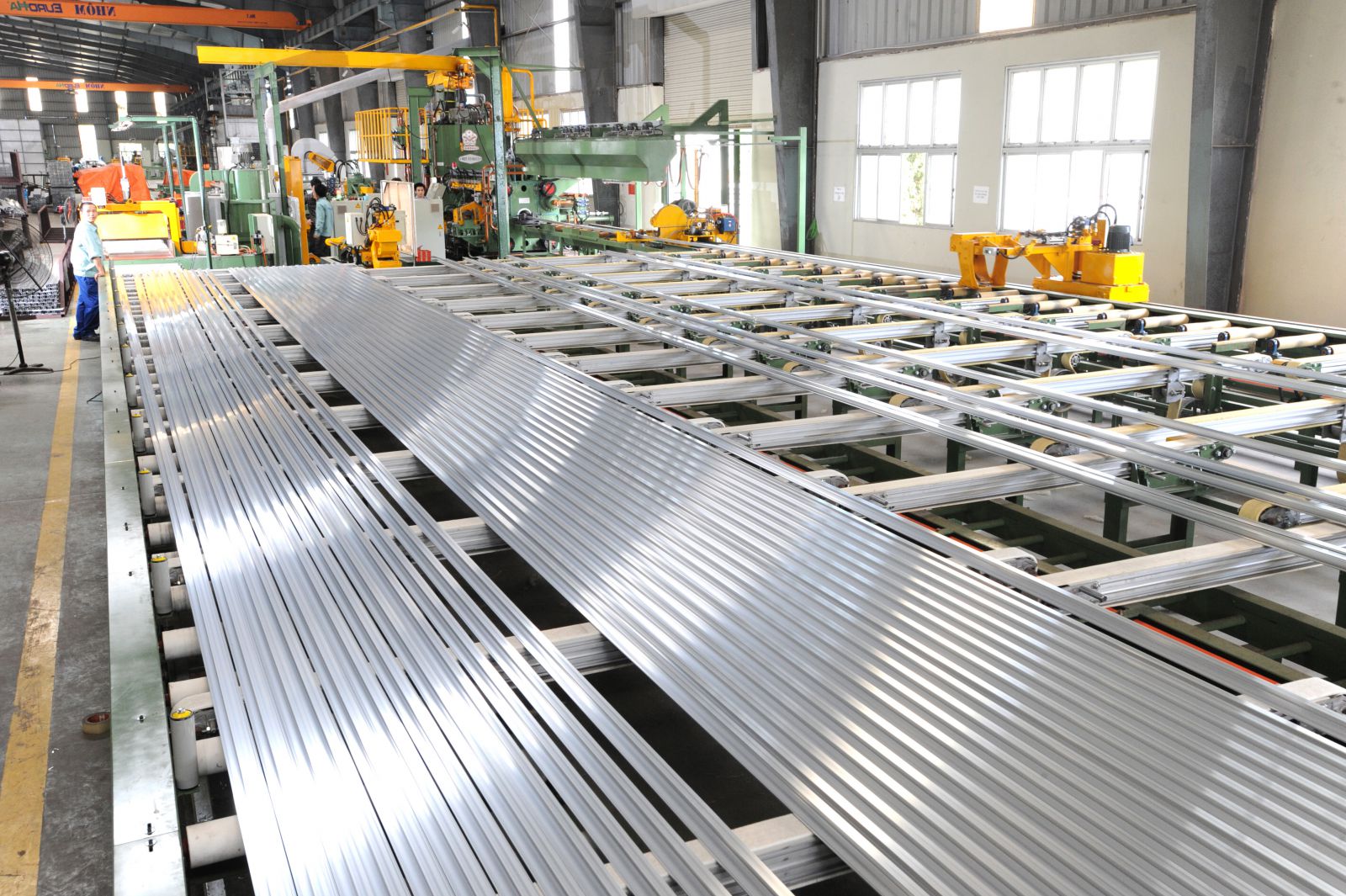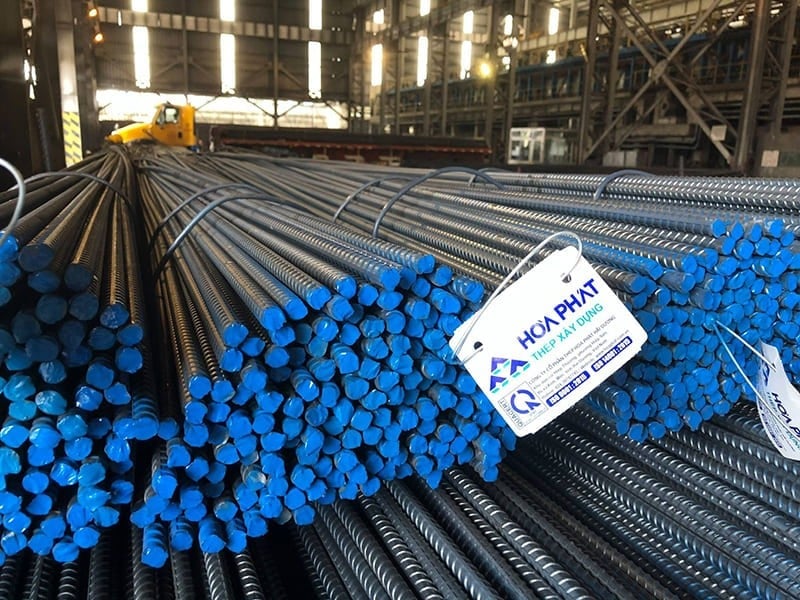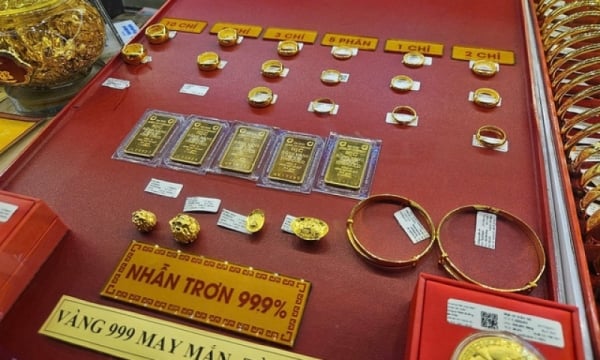As one of the six countries with the largest amount of steel imported into the US in 2024, many opinions say that the US imposing tariffs on aluminum and steel will have a negative impact on Vietnam's steel exports. However, in the short term, Vietnamese steel products still have the opportunity to continue exporting because the capacity of US steel and aluminum manufacturers cannot meet the demand immediately.
US imposes 25% tax on imported steel and aluminum
On the morning of February 11 (Vietnam time), US President Donald Trump officially signed an executive order imposing a 25% tax on steel and aluminum imported into the country. The new tax will take effect from March 4. Mr. Trump pledged that this effort will help boost production and bring more jobs back to the US, while warning that the tax rate could be raised even higher.
Thus, the aluminum import tax will increase from 10% applied since 2018 to 25%. Countries that are currently exempted from aluminum and steel tariffs will no longer have this benefit.

President Trump's trade adviser, Peter Navarro, said the measures would help US steel and aluminum producers and strengthen US economic and national security.
"Steel and Aluminum Tariffs 2.0 will end foreign dumping, boost domestic manufacturing, and protect the steel and aluminum industries as the backbone and pillar of the U.S. economy and national security. This is not just a trade issue. This is to ensure that America never has to rely on foreign countries for important industries like steel and aluminum," he emphasized.
However, according to experts, the above move may benefit the US aluminum and steel industries, but also affect the economy in general due to increased import costs, while threatening to increase trade confrontation between the US and other countries.
During his previous term, Mr. Trump also imposed 25% tariffs on imported steel and 10% on imported aluminum but later exempted some trading partners, including Canada and Mexico. Meanwhile, China has not fully implemented the phase 1 agreement reached with the United States.
The EU responded to US tariffs in 2018 with tariffs on more than $3 billion worth of US goods, and the bloc could use those measures again. Meanwhile, China has since drastically reduced its dependence on US products. “Their retaliation shows how prepared they are. They have a lot of weapons in their arsenal,” said Wendy Cutler, vice president of the Asia Society Policy Institute.
There is still opportunity to continue exporting.
Responding to baochinhphu.vn, Mr. Do Ngoc Hung - Trade Counselor, Head of the Vietnam Trade Office (Ministry of Industry and Trade) in the US said that US customs statistics show that in 2024, Vietnam exported about 983 million USD of steel and steel products, an increase of nearly 159% compared to 2023; while aluminum products had a turnover of 479 million USD, an increase of 9.5%.
Some large-scale steel manufacturing enterprises in Vietnam such as Hoa Phat Group have stopped exporting steel to the US and have expanded their exports to more than 10 other markets since the US applied a series of trade defense investigation measures.
Currently, Vietnam's aluminum and steel products are still subject to 10% and 25% tariffs respectively under Section 232 that the US has applied since 2018 to most countries, some products are excluded from the US list. In addition, Vietnam's aluminum and steel products are a frequent subject of trade defense lawsuits. Regarding steel products, the US has investigated more than 34 cases, accounting for more than 50% of the total number of lawsuits that the US has investigated trade defense with Vietnam, while there are 2 cases regarding aluminum products.
For the US, the tax measure will certainly increase inflation as aluminum and steel are basic commodities and have high demand in the US. Difficulty in exporting to the US will also affect the supply chain. Steel and aluminum from countries that have difficulty exporting to the US will find ways to export to other countries.
In addition, imposing high tariffs on exported goods will cause steel companies to return to the domestic market and cause countries to increase protectionism for steel and aluminum products. Similar to 2018, when the US applied Section 232 to aluminum and steel, the EU, Turkey, etc. all launched safeguard investigations on most imported steel. This will cause difficulties for steel exporting countries like Vietnam in other markets, besides the US.
"However, the US currently depends on the demand for imported steel (accounting for 12-15%) and aluminum (accounting for 40-45%). If the US applies it to all imported goods, we still have many opportunities to continue exporting. In fact, the production capacity of US steel and aluminum manufacturers cannot immediately meet domestic demand. When all countries are subject to common taxes, Vietnamese businesses also have the opportunity to compete. Because currently, Vietnamese aluminum and steel products are favored by importers because of their quality and product price. However, the profit margin of businesses will decrease," Mr. Do Ngoc Hung informed.

According to economist Ngo Tri Long, the US imposing an additional 25% tax on all steel and aluminum products imported into the country will affect the world steel industry and Vietnam. This is a fairly high tax rate because the US wants to protect the domestic steel industry, forcing major exporting countries to sit down and negotiate. The first impact of this is that it will increase the selling price of this product in the US market, thereby reducing the demand of local consumers. This comes back to the problem of whether imported products can compete with goods from US companies or not. If they can still compete, steel from other countries can still be sold in the US.
From another perspective, this increased tax does not discriminate between countries exporting steel to the US, which means that competition in general has not become more fierce than it is now. Vietnamese businesses themselves only have the option of reducing costs to increase competitiveness, especially in terms of selling prices. Because depending on each unit, the selling price will be adjusted differently, depending on many different factors, and will not necessarily increase exactly by the import tax to the US. At the same time, businesses must continue to diversify their export activities, making efforts to find new markets to limit risks when focusing on one market.
"Like previous years, when steel products faced many risks of anti-dumping taxes, market diversification was always mentioned. This is very difficult, but businesses still need to make efforts to implement it, avoiding risks when being too dependent on a traditional market. The imposition of new taxes by the US, if implemented without distinguishing products from any country, could also be an opportunity for steel and aluminum producers to find new directions and increase competitiveness," said economic expert Ngo Tri Long.
How are Vietnamese businesses affected?
Assessing the impact of the US tax policy on some steel stocks, the strategic report of ACB Securities Company (ACBS) said that the direct impact of the US tariff barrier on Hoa Phat is quite low.
The reason is that the export ratio of this enterprise only accounts for 30% of total revenue, of which exports to the US account for about 5-10% of export revenue. Therefore, export revenue to the US market accounts for 1.5-3% of Hoa Phat's total revenue.
However, Hoa Phat may be indirectly affected by the US tariff policy at a moderate level. The reason is that if Hoa Sen and Nam Kim - two enterprises that consume a large amount of HRC (hot rolled coil) of Hoa Phat and have a high proportion of exports to the US - encounter difficulties with tariffs, it will lead to a decrease in demand for input HRC.

Regarding galvanized steel products, this unit assessed that Nam Kim was more affected than Hoa Phat because the proportion of exports to the US was higher (accounting for 40-60% of revenue and the US market ranked third after Asia and Europe). Meanwhile, export revenue only accounted for 40-50% of Hoa Sen's total revenue and the US market accounted for about 15-20% of export revenue.
In the domestic market, Hoa Sen and Nam Kim have just benefited from the continued imposition of anti-dumping taxes on galvanized steel from China and South Korea. However, these two enterprises may be at a disadvantage if Vietnam soon applies anti-dumping taxes on HRC imported from China and India.
Sharing the same view, Mr. Tran Hoang Son - Director of Market Strategy, VPBank Securities Joint Stock Company (VPBankS) said that in 2018, Mr. Trump also imposed a 25% tax on steel exports. Vietnam has also been subject to this tax. With high tax rates, countries like Vietnam and China export to the US with a relatively small proportion, only about 3%. Therefore, the impact on Vietnam is not large.
However, some stocks may be affected such as HPG (Hoa Phat), NKG (Nam Kim), HSG (Hoa Sen), GDA (Ton Dong A). Among them, the stocks most affected are the galvanized steel group because the export output of this group to the US is very large. For example, Ton Dong A exports to the US account for about 35%, Nam Kim accounts for about 25%, Hoa Sen accounts for 15%. Hoa Phat alone accounts for less than 5%.
In general, Mr. Son believes that in the first half of this year, factors related to the export market, especially Vietnamese goods that may be subject to global taxes, or Mexican, Canadian and Chinese goods that are subject to taxes, may affect information and impact stock prices.
The imposition of tariffs is also expected to increase inflation in the US as aluminum and steel are basic commodities with high demand in this country. The advantage of Vietnamese goods is competitive prices and good quality, which will support the US economy, help reduce inflation, and support the foreign trade structure of the two countries.
The Vietnam Trade Office in the US recommends that Vietnamese businesses need to assess the situation to have appropriate business strategies, expand exports to markets that have FTAs with Vietnam, and avoid dependence on one market.
Enterprises also need to comply with US regulations on origin and always be ready to fully participate in the process of explaining the US investigation agency's trade defense cases, when there are currently 34 trade defense lawsuits on steel products and two investigations on aluminum. At the same time, enterprises need to closely coordinate with the Ministry of Industry and Trade (Trade Defense Department) and diplomatic missions abroad to closely monitor the situation to have appropriate responses.
Previously, at the regular press conference of the Ministry of Industry and Trade held in January, Mr. Tran Thanh Hai, Deputy Director of the Import-Export Department, said that the US is currently Vietnam's largest export market. In 2024, Vietnam will be the 8th largest partner of the US, accounting for 4.13% of total export turnover to this market. In the context of global trade liberalization, US President Donald Trump uses a classic tool: tariffs. In fact, Mr. Trump has imposed high tariffs on goods from many markets such as China, the EU, etc.
In 2025, the Ministry of Industry and Trade has outlined two scenarios. The optimistic scenario is that the US maintains its current tax policy on Vietnamese goods. In the trend of shifting supply chains, Vietnam can completely welcome investment flows to increase exports. The second scenario, if the impact of stricter tariffs is more severe, it can affect the global economy, causing more or less impact on Vietnam's goods exports. For this scenario, the Ministry of Industry and Trade will consider reporting to the Government to support manufacturing and export enterprises in diversifying markets in the coming time.
Source: https://baodaknong.vn/nganh-nhom-thep-chiu-tac-dong-the-nao-truoc-ap-luc-tu-thue-quan-cua-my-242472.html


















































Comment (0)